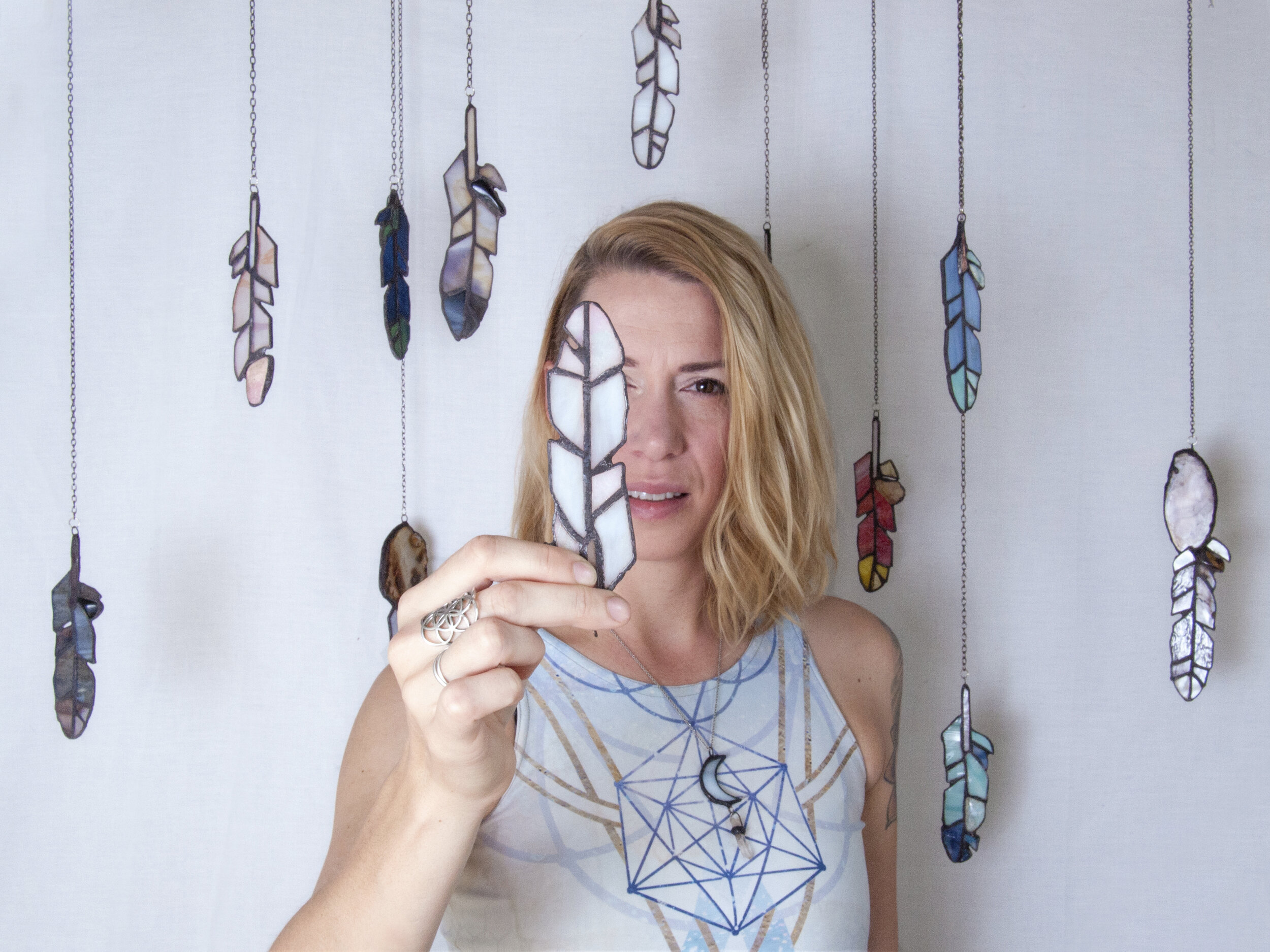
One of the things I love the most about working with domes is that the system is set up to be a space of potential that artists and communities can use to build something truly unique. One of the things I often focus on is that the domes can be a beautiful housing for installation art, movement art, workshops, and living of any kind. I talk about the uses of the interior a lot, but one of the things I mention less is the potential that the outside of the dome has to be its own space of beauty and art.

While the framing and shade stars are beautiful in and of themselves, I am always aware that the surface of the shade stars offers infinite potential as a canvas. Not only are there a variety of different types of spandex patterns, but there's no limit to what can be done on this surface with just a little imagination. In the years past, I personally have explored this surface in a variety of ways.

Screen-printing on the stars is one of the very first things I tried. I loved that the flat beautiful surface of the fabric held the ink so well. It was durable and added some life and interest to the panels.

Halcyon Temple 2016
Another thing that I found worked great was digitally printing the panels.

With dye-sublimation processes you're able to print dye directly onto fabric. This means that you're able to take any image you want and have a photo realistic image that is durable and long-lasting. I loved how realistic I could get these, but I found the process to be a little time consuming and expensive. I also couldn't find a printer big enough to print a panel that could be a full shade star, so I ended up having to sew extra fabric edges on to all of the panels.

Orison Dome, 2016
Projections are a wonderful and non-permanent way of using a dome as a canvas.

VJ UserZero and I used his mapping software Freeliner to map the contours of the dome, but there are many other options if you don't have the know-how of a VJ. You can use any home projector or light source. Get creative! Make a shadow puppet theater! Hang paper cutouts in front of a light source! There is no end to what you can make your shade panels look like with light and a little creativity.

L'OssitBurn, 2016
Painting of course, is a wonderful and easy way to make these panels unique.

I prefer spray paint, but you could paint on your existing shade stars with almost anything. If you have a structure and you're wanting to update it, paint is an easy and fun way to go. I can't wait for the day when I see someone with a dome decide to hand all their friend’s paintbrushes and lets them have at their space. If you decide to do it or have done it already, please, send me pictures! I'd love to see it!

Gratitude Migration, 2016
This year I wanted to try a different technique to use on the panels of my dome. I had been booked for a solo show for the SUB gallery in Montreal and I wanted to create an art installation using my dome frame.

I have been working a lot in stain glass and video this year, and my main goal was to make panels that could include both of these aspects. This meant that the panels would need to be transparent enough to let light through, and strong enough to hold glass.

The show was going to be about a community of activists who I saw making change in the world. I wanted it to be a show of portraits, but I didn't want the show to be photographs hung on a wall. I wanted them to be a structure you walked into, that protected you and invited you into the community. I decided that the dome was the perfect structure to pull off this feeling.

The interior of each portrait would be made of stain glass. The intention was for these pieces to represent the spiritual centre of each individual.

I started by taking portraits of these individuals, but needed a way to make their portraits appear true to life on some sort of fabric. I didn't want to use digital printing, as I found it costly and couldn't get it to be the correct size, so I started doing testing with printed paper and a technique I found online called gel transfer.

I photoshopped the images into the artwork that I wanted to see on the panels and then laser printed them to scale on thin paper.

I checked to make sure that they were the right size to fit the stain glass pieces that I had made.

I bought a transparent and strong white fabric that I laid face down and stretched so it wouldn't shift during the process.

I coated the fabric in a painting gel medium and laid the paper ink side down onto the wet medium.

I let the whole thing completely dry and then I soaked the paper in water. Rubbing gently I removed the paper backing from the fabric. The ink was stuck in the gel medium and the paper was completely gone.

While time consuming, the process was completely successful in achieving the effect that I wanted. The portraits had a lot more texture to them because of places where the ink didn't adhere or was rubbed off, but I liked the look of it.

I tested the first couple panels to make sure that they were transparent enough to let through my projections.

This technique was completely successful in achieving the requirements I needed for this installation. Even though it took a long time and some elbow grease, I loved the look of it.


More photos of this installation soon to come !















































































































































































































































































































































































































































